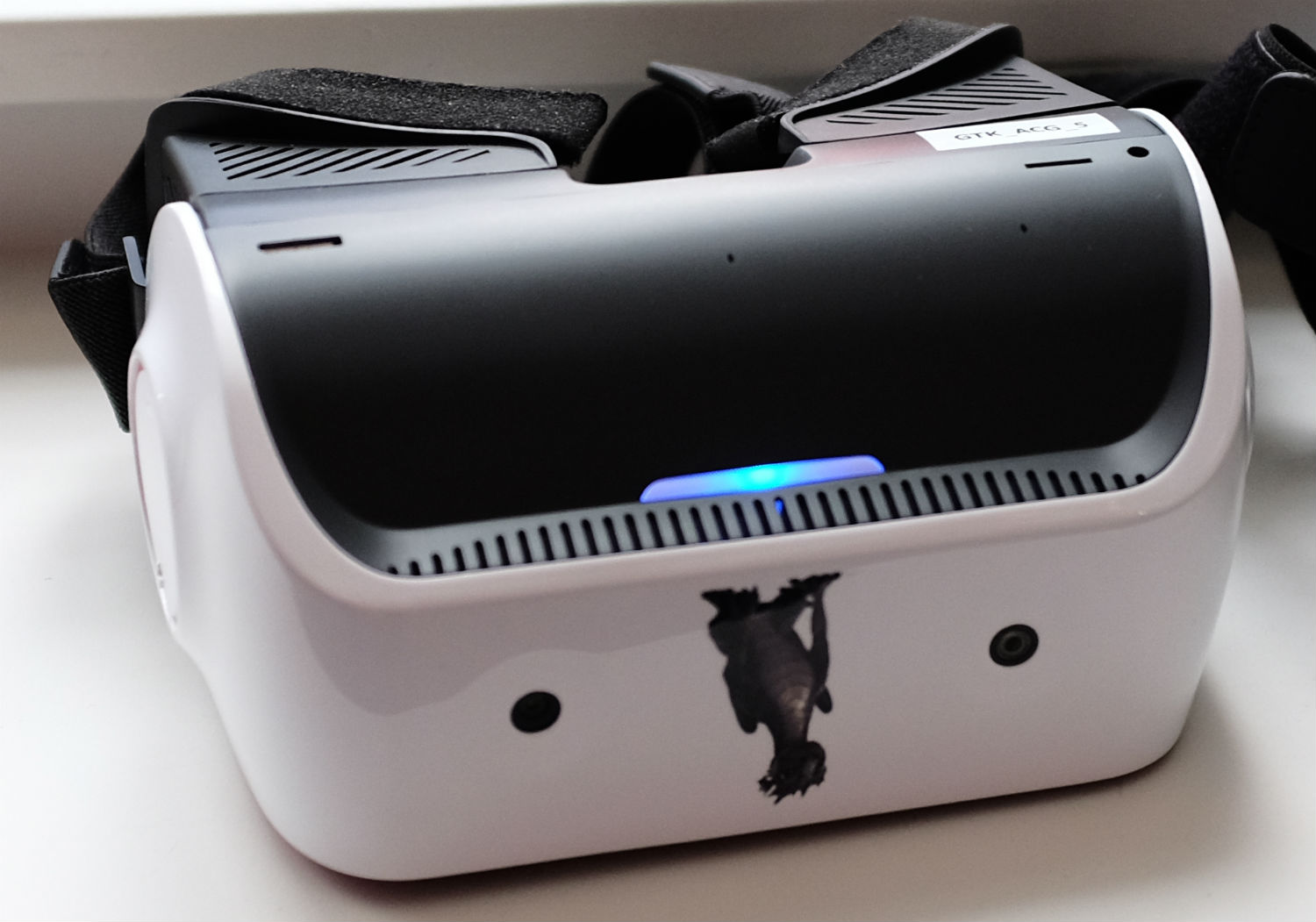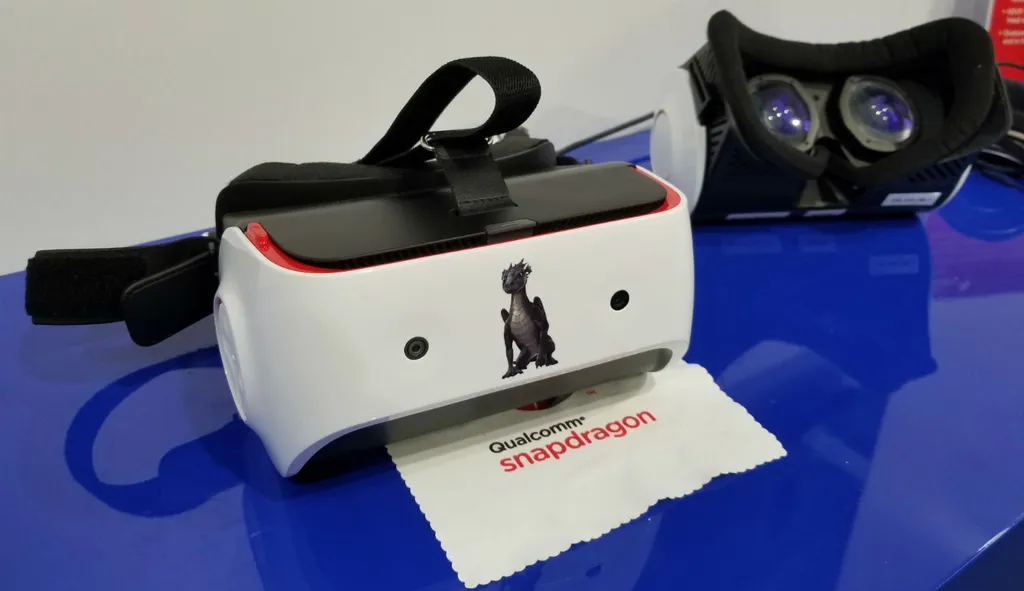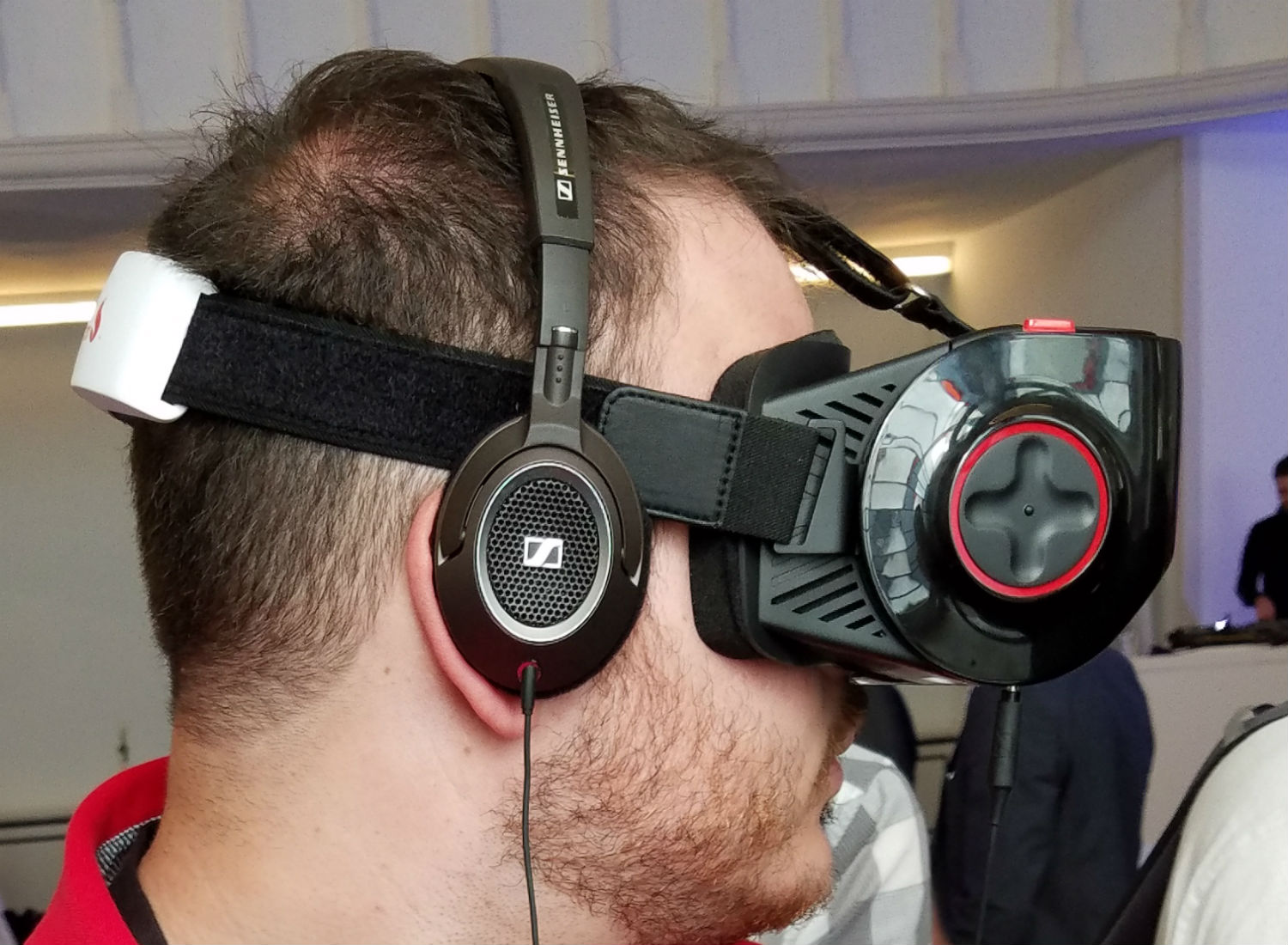Right now, mobile VR is mostly a series of HMDs that take a smartphone slotted into them and work pretty well for about 20-30 minutes until the phone starts to overheat. Smartphones as a whole simply are not thermally designed to run at full load (which VR is good at doing) for 30 minutes at a time. Sure, you can use your Google Cardboard or Samsung GearVR for short pieces of VR content here and there, but they aren’t really for prolonged VR usage at all. Additionally, they lack spatial tracking among many other features that the likes of Oculus Rift and HTC Vive and other PC-based VR do have. This is where the promise of all-in-one VR solutions comes in, smartphone SoC-based solutions that combine both the compute and display capabilities into a single fully integrated device.
The reason why this is a good thing is because you can now have untethered VR experiences that last longer than 20-30 minutes and can deliver an experience that is better than smartphone VR but not quite at the level of PC VR. I personally believe that the future of VR will be in some sort of standalone VR solutions either tethered to a phone or completely fully integrated into the HMD. However, until recently there were very few all-in-one solutions and most of them appeared to be one-off solutions like the Pico Neo, Sulon Q or even the new Alcatel Vision. There are also rumored headsets like Google’s Daydream and Samsung’s Odyssey headsets. The one thing that all of these headsets lack is that they are essentially one-off closed solutions that all operate at different performance and feature levels.
That’s where Qualcomm’s VR820 comes in and offers something to help the industry move forward and start to take standalone or all-in-one untethered VR seriously. Qualcomm announced the VR820 at IFA 2016 and I had a chance to try it out twice during the show, including during a meeting with Jim Merrick, Qualcomm’s Marketing Director for their IoT division which includes VR headsets.
The VR820 features the Snapdragon 820 processor which this reference headset is designed to fully utilize with features like inside-out tracking using an RGB camera and a wide angle camera.
This ability to do spatial and 6-DoF tracking with only cameras and sensors is thanks to Qualcomm’s own technological advances they’ve made in their drone division which also utilizes Snapdragon processors. There are no lighthouses, no markers, nothing that would require external intervention to enable the 6-DoF tracking, not even a depth sensing camera. This is extremely important for a standalone VR headset to have and is a great feature for Qualcomm to ensure is integrated into their reference design.
When I tested the tracking, there were no hiccups whatsoever. It was extremely smooth. Admittedly, the scene itself was pretty simple so the amount of GPU processing needed was limited, but I suspect that we’ll really know what its like when we see real content running on it and not tech demos. I remember the first time I tried these demos, they were already pretty impressive for how smoothly they ran and you can tell they have a bit more polish on them now than they did before. But the tracking has always been smooth, I tried my best to break it but it worked pretty well.

Thanks to their advanced audio capabilities, Qualcomm also has integrated spatial audio as a part of the VR820 which is extremely important as part of the immersion for VR. In addition to spatial audio, the VR820 also has four microphones for noise cancelling to enable extra clear audio recording to make social VR experiences much better than they are today.
Another extremely important feature they’ve been able to integrate into the VR820 is eye tracking for foveated rendering. Qualcomm is able to enable eye tracking with the VR820 using two inward-facing cameras. They aren’t saying exactly who they’re using to make the eye tracking component work, but I believe they could be working with someone like SMI to make this happen. The VR820 also features a very high resolution 1440×1440 per eye OLED display which is higher resolution than most headsets out today and will enable yet another premium VR experience for whomever decides to adopt it.
Qualcomm had three demos running on the VR820, I got a chance to try out two of them. One was a 6-DoF demo that shows a little octopus in the ocean and you can walk around and look around the octopus without losing any tracking. The second demo was with a dragon who flies around you and blows fire in front of you to show you the head tracking and spatial audio capabilities of the platform. To my knowledge, there were no demonstrations that showed off the hand gestures, hand tracking or eye tracking capabilities of this platform, but I suspect that we will see those capabilities realized once the platform starts to mature and real software development starts to take hold.
The great thing about the VR820 is that it is passively cooled and runs extremely smoothly without any effort on my part. Additionally, it works pretty well without any hiccups on my part other than accidentally closing the demo when I was explicitly told not to press a certain button. The headset features a 5000 mAh battery which gets you a few hours of battery life, but I suspect that you’ll see that number go up as software optimizations continue and the headset starts to run things like Android 7.0 Nougat. Additionally, the VR820 uses a counter weight on the back of the headset to balance out the weight of the headset and I suspect that counterweight could be used for a battery in some OEM designs if they want to get more battery life out of it.
Performance-wise, I would actually expect this headset to benchmark and perform better than Snapdragon 820-based smartphone solutions because of the better cooling solution. The thermal designs of smartphones these days are extremely limiting on long term VR capabilities and until something changes about that standalone VR headsets are going to be the future of mobile VR. Qualcomm has not said anything about Daydream capability, but I suspect that there’s a very high chance that we could see a Daydream headset built using this reference platform considering all the various VR features it already supports.
Qualcomm says that the VR820 will be available in Q4 with headsets based on the platform coming shortly thereafter. That means that we might see some serious and major VR announcements at CES 2017, much like this year, but with more of a focus on standalone VR solutions based on mobile SoCs rather than PC-based solutions like we saw this year.
Disclosure: My firm, Moor Insights & Strategy, like all research and analyst firms, provides or has provided research, analysis, advising and / or consulting to many high-tech companies in the industry including Qualcomm and Samsung referenced in this column. I do not hold an equity position in any of the companies mentioned.
























